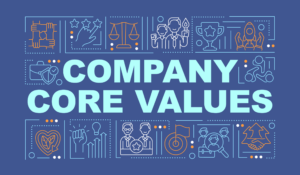Advances in technology have pushed the U.S. economy into its biggest transition since the start of the Industrial Revolution.
Consider these findings from the McKinsey report, Jobs Lost, Jobs Gained: Workforce Transitions in a Time of Automation:
- 62% of executives believe they will need to retrain or replace more than a quarter of their workforce between late 2017 and 2023 due to automation and digitization.
- 70% of executives at large companies (more than $500 million in annual revenues) see technological disruption over the next 4 years affecting more than a quarter of their workforce.
Replace or retrain a quarter of their workforce. How many positions is that in your organization? Keep in mind that the median cost of replacing a worker is 21 percent more than an employee’s salary, and the percentage rises as the base salary increases. That said, how much replacing can most organizations afford to do?
Retraining is the only real option, however, retraining alone isn’t the answer. With the speed of technological advances counted in months, not years, what do you retrain your employees to do, and how do you dispense that training at a speed and depth to keep ahead of those advances?
Skills That Employees Need Most
According to HRdrive.com, LinkedIn Talent Solutions predicts 85% of the jobs of 2030 haven’t been invented yet.
In 2016, Pew Research Center and Elon’s Imagining the Internet Center asked almost 1,500 technologists, scholars, practitioners, strategic thinkers, and education leaders for their thoughts on the future of workplace training.
Pew’s State of American Jobs report points to a need for employers to support both lifelong training and developing key traits in their employees as keys to success. In the study, 87% of workers said training and development of new job skills throughout their work-life will be essential to keep up with changes in the market.
Traits that can’t be found in automation and artificial intelligence will likely be highly sought-after skill sets, according to HRdrive.com. While the tasks may be today unknown, some basics will always be needed, like leadership and creativity. Some emerging skill sets are being identified, however, that may be just as important.
These skill-sets include:
- Adaptability. We’ll need to change our current learning models to develop them. To do so, classroom learning will give way to experience-focused education that forces people to adapt, solve problems, or co-create solutions.
- Learning to learn. Organizations need to move beyond traditional teaching and tech support to teach self-help skills so that employees can solve problems on their own. Encouraging and providing access to knowledge will create the lifelong learners the jobs of the future will require.
- Language fluency. Employees will need to be fluent in the language of business — which overwhelmingly will be code. The more comfortable we are with tech, the less it intimidates. The more user-friendly tech becomes, the more we work with it. That fluency in the use of tech, rather than the fear of it, should serve employers well. We’ll need computer fluency to understand the root of all we do.
Forward-looking companies that can strategically anticipate skill needs and train or redeploy existing employees will likely have a strategic advantage over slower-moving organizations that try to find non-existent talent externally.
As you rethink how you deliver continuous learning to prepare your employees for the future of work, Udemy, the online training marketplace, suggests 3 steps to consider.
- Staying on top of ever-evolving skills. Instead of only surveying employees or talking to internal business leads on their learning needs, your learning and development team will need to drive the conversation on skills gaps and related training.
- Redeploying employees to new roles. As technology eliminates some jobs, it creates new ones. With outside workers with new skills increasingly hard to find, thriving companies will strategically redeploy and retrain employees for brand-new jobs.
- Retraining employees quickly for new roles. With a massive skill shift underway, there will be no time to waste with long course creation cycles or static classroom learning that lasts several hours. Instead, the very technology driving change will itself provide tools to expedite training.
Tools for Training the Mobile Workforce
The most effective re-training programs will be delivered across platforms that today’s employees find easy to access and fun to use. More and more, those platforms take the shape of a mobile app on your smartphone or tablet.
If you can learn a foreign language from a mobile game, why shouldn’t you be able to learn proper sales techniques from gamified training? Employees want to be efficient, and they want to be productive. Accessing training via a mobile app gives them the ability to meet those needs.
Think of how convenient training becomes when delivered via a mobile app. You can engage in training at your convenience – commuting to or from work, during a free hour of the workday, or even from the comfort of your couch in the evening.
A platform such as HubEngage offers not only convenience but also powerful, data-driven analytics. You get both the big picture (such as which modules people are accessing) and specific scoring metrics (how long people engage modules or how they score when tested). This, in turn, allows you to gauge the performance of individual pieces of content, training modules, or gamified processes.
Conclusion
Effectively retraining your workforce is only one function this tool can perform for you. HubEngage offers businesses of all types a fully customizable app platform, optimized for employee engagement.
It empowers businesses like yours to create the exact, custom employee engagement tools that work for your people and your business. Develop a training platform. Increase employee engagement. Create a happier, more satisfied workforce. And enable easy advocacy and knowledge sharing. All with one app.
Test drive our employee engagement app, for free, and be ready for a new world of employee engagement opportunities to open up to you.













